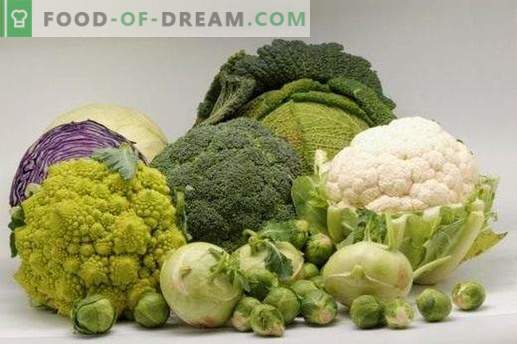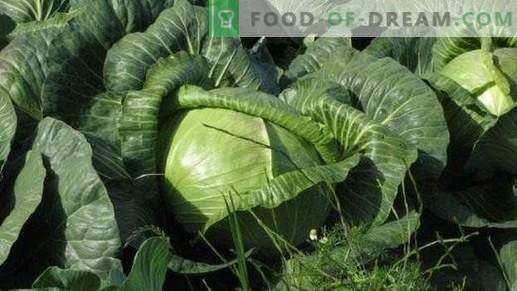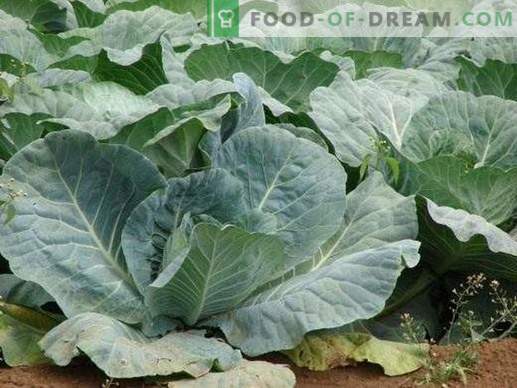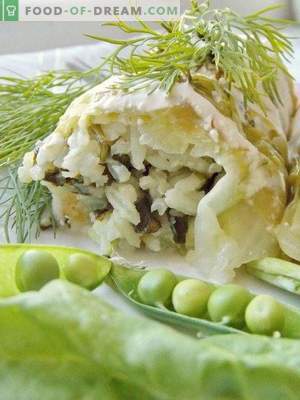There comes a bad time - the time of picking berries, vegetables, fruits, mushrooms. So we decided to remind the readers of “Botanichka” about the benefits of certain gifts of nature. Let's start with cabbage. Who does not know the parable of how the ancient Roman emperor Diocletian, having left his throne, went to the village, intending to grow cabbage there. When a delegation of patricians arrived to him with a request to return to the fulfillment of imperial duties, he replied: “What a throne, you better see what kind of wonderful cabbage I grew!” And he remained famous in history. There is evidence that cabbage with seasonings from ancient times was served at feasts as one of the delicious dishes. In ancient Greece, in the Roman Empire, and then in Russia, cabbage was given its due as a tasty and healthy vegetable.

In our country, white cabbage is most common, although some species of the cruciferous family surpass it in the content of certain vitamins. Cabbage contains many substances that are beneficial to the human body: carbohydrates (sugar, starch, fiber, hemicellulose, pectin); proteins containing essential amino acids; fats. Cabbage has an exceptionally rich set of vitamins. Only 250 grams of this vegetable provides the body with a “daily ration” of vitamin C. Vitamins B1, B2, B3, B6, P, PP, E, K1, D1, U and provitamin A are also contained in cabbage. Provitamin A (also known as carotene) , found only in green leaves. Cabbage contains biotin (vitamin H), a whole complex of microelements (in particular, a lot of potassium - 185 mg per 100 g of cabbage). There are also calcium, phosphorus, iron, magnesium, cobalt, copper, zinc, organic acids, and other substances. Vitamin B9, or folic acid, necessary for normal blood formation and metabolism, is contained in the outer green leaves, as well as in the early green cabbage. During heat treatment, folic acid is destroyed, therefore, patients with a blood disorder are recommended raw cabbage or fresh cabbage juice.

Vitamins of group B, contained in cabbage, help the nervous system, vitamin K promotes good blood clotting, and carotene not only saves eyesight, but is also a prophylactic against the formation of malignant tumors (we will return to this feature of crucifers later). It is believed that the amount of vitamin P, which helps strengthen the walls of capillaries, cabbage among vegetables has no equal. Cabbage has lactic acid useful for the body, so it is useful for people with diabetes. Cabbage manifests its curative properties both in fresh and in fermented form. Fresh cabbage juice helps with atherosclerosis, obesity and stress. It is recommended to use it to increase the acidity of gastric juice, lower blood sugar and improve appetite. Women use cabbage pickle to whiten their skin, i.e., for beauty. And in order to maintain the shine and density of dry hair, it is recommended once a year to conduct a treatment-and-prophylactic course (about a month), during which fresh cabbage juice or a mixture of cabbage, lemon and spinach juices should be rubbed daily.

However, in the use of cabbage there are also contraindications. It is not recommended for people with high acidity, after surgical interventions in the abdominal cavity, with diseases of the thyroid gland, with especially strong manifestations of peptic ulcer and bleeding of the gastrointestinal tract. Due to the large amount of salt, sauerkraut is not recommended for hypertensive patients, as well as for those who suffer from diseases of the kidneys and liver. For such people, sauerkraut before eating should be soaked to get rid of excess salt, or use lightly salted recipes in its manufacture - no more than 10 grams of salt per kilogram of cabbage.

Research scientists have shown that cabbage is a universal tool that protects people from radiation in the treatment of cancer. An anticancer substance from cruciferous vegetables also protects rodents from lethal doses of radiation. According to scientists, the compound obtained from white cabbage, broccoli and cauliflower successfully protects experimental mice from lethal doses of radiation. It can be assumed that if this technique worked on mice, it should work on humans. The resulting compound, called dindolylmethane, was shown to be safe for humans, as shown by experiments. This compound has already been mentioned as part of preventive anticancer therapy. Dr. Eliot Rozen of the Johntown Lombardy Complex Cancer Center conducted a study on the effects of this compound on the body, irradiated with radiation. Mice irradiated with radiation were injected every day for two weeks with this compound. Drug administration began ten minutes after the animals were irradiated. As a result, all rodents from the control group died of radiation, and in the experimental group by the end of the month more than half of the experimental remained. It also turned out that rats lost less red blood cells, erythrocytes, leukocytes and platelets in the blood - a decrease in blood cells is a typical side effect in cancer patients undergoing radiation therapy. Thus, diindolylmethane can protect healthy tissues during radiotherapy and in the event of a nuclear catastrophe, scientists conclude.























